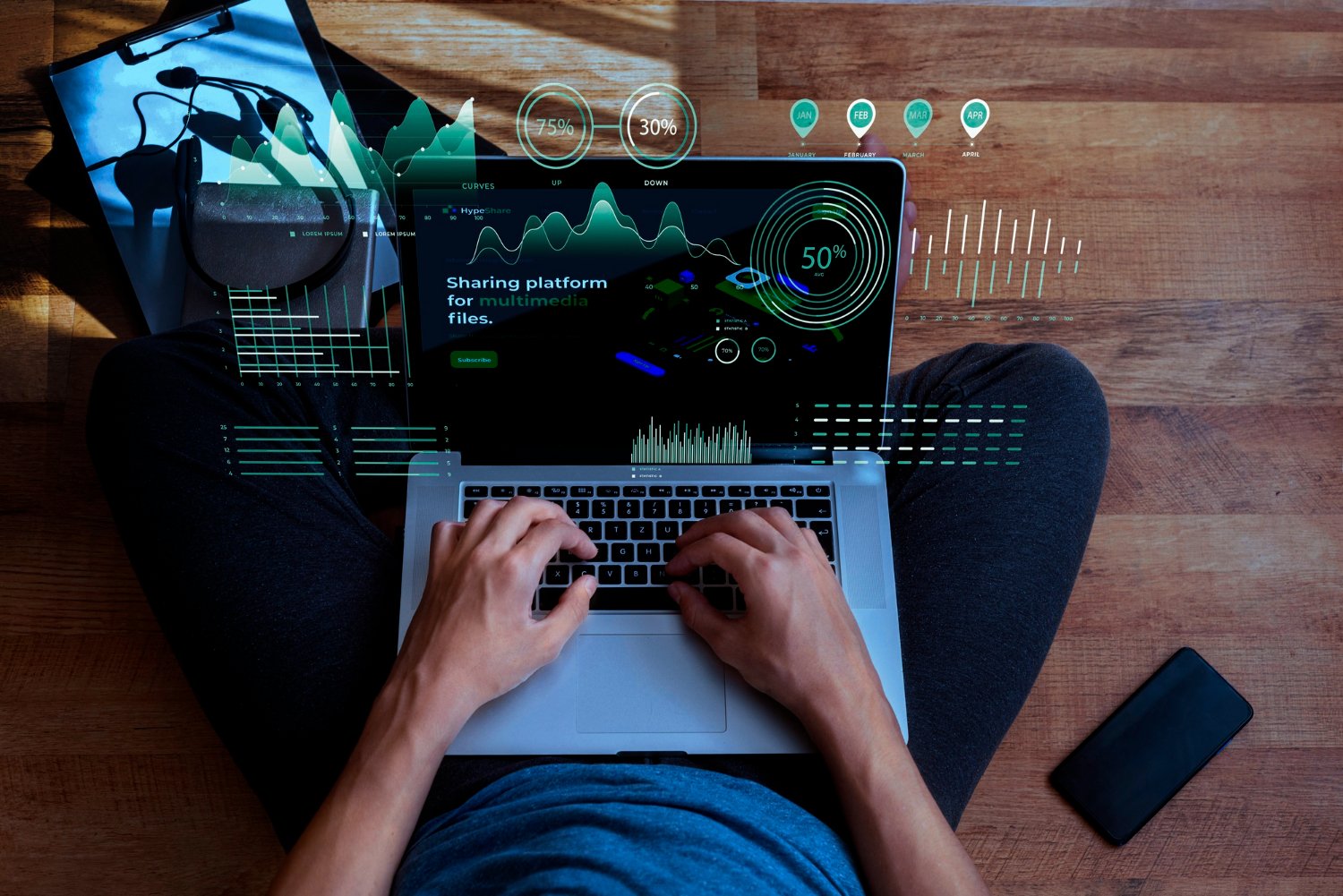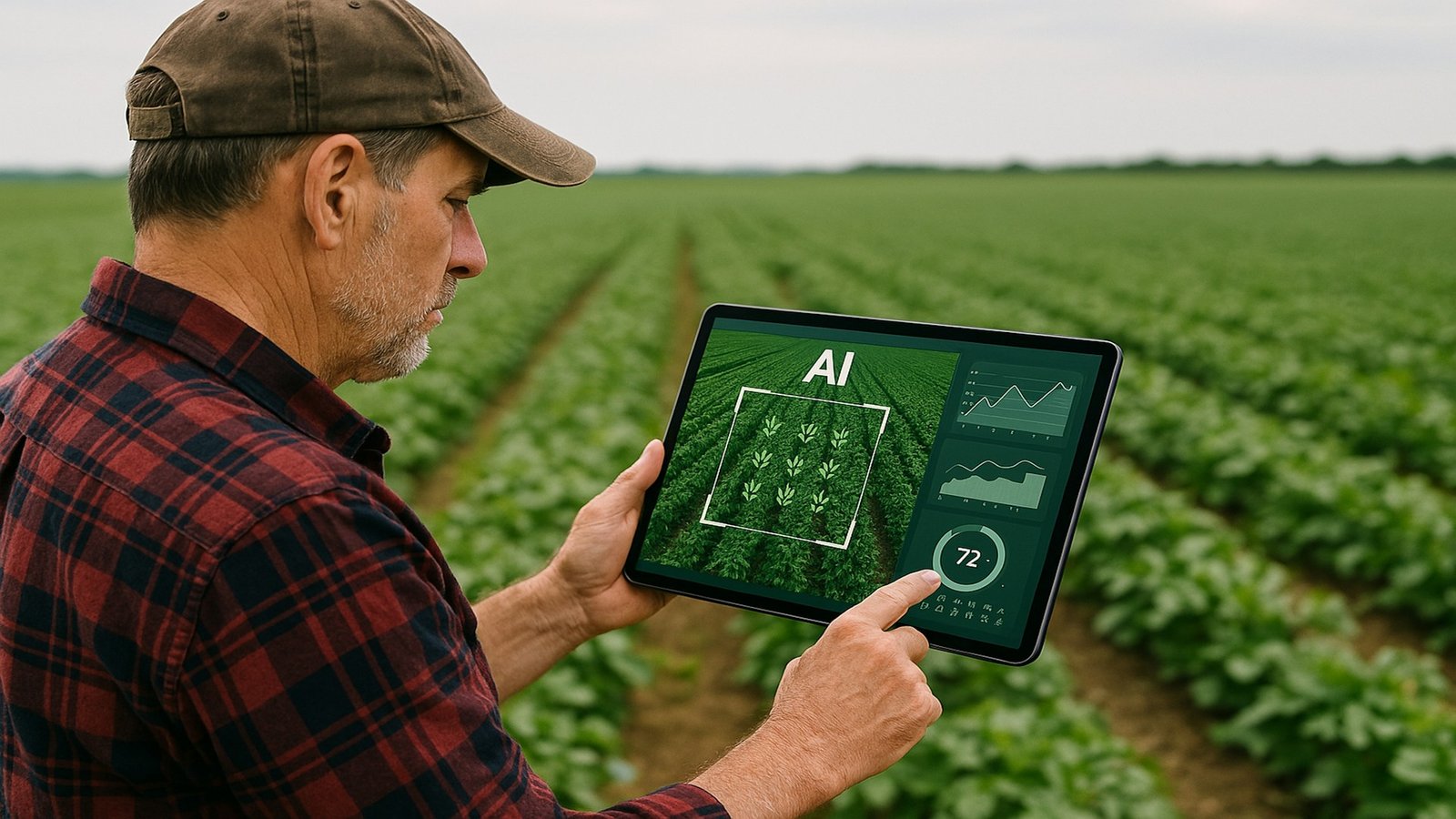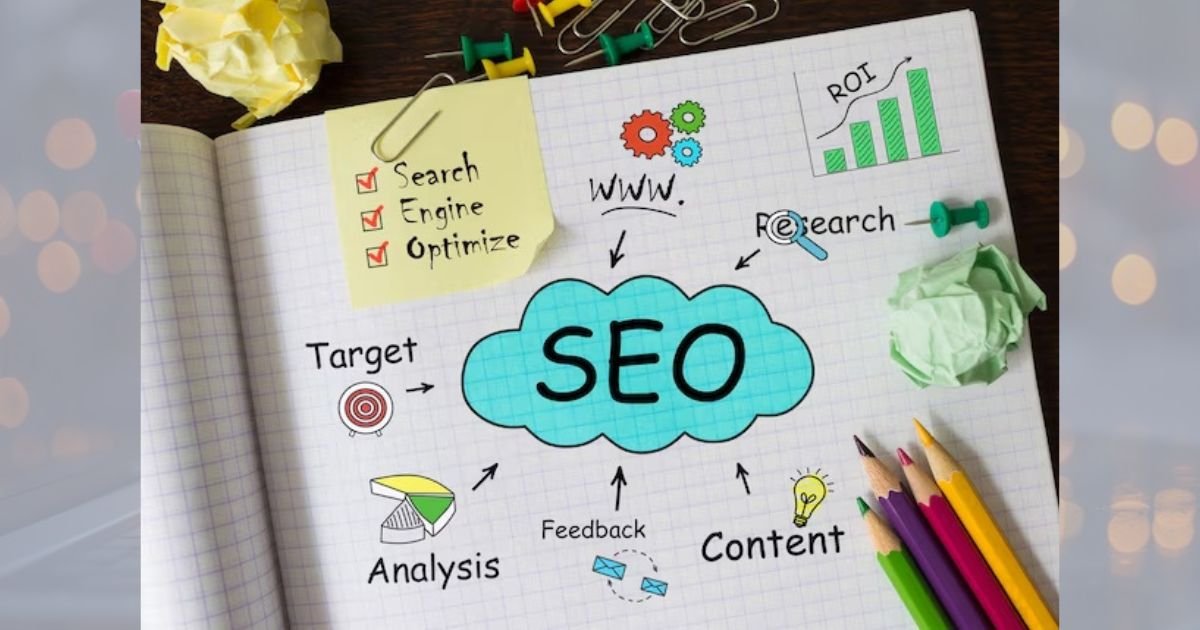Technology
The Future of Artificial Intelligence: What to Expect by 2030?

The thought of artificial intelligence (AI) is no longer something from the future. However, this force is rising and changing how we live, work, and talk to each other. AI is used increasingly daily in voice assistants and in recognizing faces. But this is only the start. Moreover, when we think about 2030, the world will likely go through even bigger changes caused by AI. AI will likely change everything, from how we shop and get around to health care and schooling. It could change work, safety, and how we talk to computers. AI is getting better quickly thanks to more study and investments in it. In the future, smart machines may think, learn, and decide for themselves. Furthermore, this blog post will discuss what AI will be like by 2030 and how it will change businesses, society, and how we live.
Smarter Industries and Workplaces
By 2030, AI will greatly affect manufacturing, healthcare, banking, and education. However, machines can figure out what’s wrong with people faster and more accurately than doctors. In finance, AI will find fraud, handle portfolios, and help people decide which investments to make. Robots controlled by AI will work in factories, reducing mistakes and speeding things up. The place of work will also change. Moreover, teams can work together better, keep track of tasks, and see trends coming.
AI might be able to do all of your routine tasks, like entering data or making plans. But this doesn’t mean that people will be changed. AI and people will work together instead. People who know how to train, guide, or work with AI systems will get new jobs. Businesses will also use AI to help them make better choices. It will help them learn more about their customers, give better service, and cut costs. AI will not only help with work by 2030; it will also help change what work is.
Transforming Transportation and Mobility
How we get around will change a lot by 2030. Today, cars, trucks, and even drones that can drive themselves are being built and tested. These technologies might be used every day by 2030. Self-driving cars could improve the roads by reducing accidents caused by human error. AI will also make riding the bus or train better. Smart traffic systems will better control the flow of traffic. Trains and buses will run on time with the help of programs that can predict what will happen.
By offering better routes and schedules, AI will help reduce traffic jams and pollution. Drones with AI could be used a lot for transport services. Packages could be sent within hours without any help from a person. AI will also help ride-sharing by making prices more accurate and providing faster service. In general, AI will make transportation faster, cleaner, and better. There will be better roads and flying cars, and AI will help make these things possible.
AI in Everyday Life and Smart Homes
AI will be fully a part of everyday life by 2030. Smart houses will get smarter and more tailored to each person. Your home helper will know what you like and turn the lights, temperature, or music on or off based on your mood. AI will help with things around the house, like shopping, cooking, and cleaning. Things will work smarter. Your fridge might tell you to get milk. Washing machines could determine which cycle is best for each type of clothing. Home safety will improve with security systems that use AI to recognize people and sounds.
The way we use gadgets will also change because of AI. Voice and facial recognition will be used instead of passwords, and phones, TVs, and other electronics will react more naturally to gestures or voice commands. AI teachers could help students learn in a way and at a pace that works for them. When it comes to entertainment, AI will suggest things that you might like. In 2030, AI will be more common in our homes and daily lives, making life easier and more linked.
Ethics, Privacy, and Human Control
Concerns about ethics and privacy will grow as AI gets stronger. By 2030, people will have to choose how much power to give machines. AI will decide what’s best for health, work, and safety. You should think about these questions. Privacy of data is a big problem. For AI to learn, it needs data. But how it uses and keeps this info safe will be important. Personal information will need to be kept safe by strict rules. People will want to know how AI systems make choices, which is called transparency.
When AI learns from skewed data, it might make decisions that aren’t fair. Like, it might treat people differently because of their race or gender. To stop this from happening, experts must teach AI with fair and reasonable data. Also, keeping people in charge will be very important. AI should help people make choices, not take their place completely. We must find a way to use AI’s power while still putting human values first by 2030.
Conclusion
Many things could happen with artificial intelligence after 2030. AI will change how we work, live, and talk to each other. However, this new technology will improve many things, like smarter homes, better healthcare, cars that drive themselves, and personalized learning. It’s going to make things easier, faster, and even better. There are, however, some problems that come with this future. We need to give a lot of thought to privacy, fairness, and authority. As AI improves, we must ensure it is used well for everyone.
Building moral rules, keeping data safe, and keeping people aware are all part of this. New jobs will be created as well as old ones. People need to learn how to use AI wisely in school. People and machines will need to work together. In 2030, AI will be everywhere, but it won’t just be in machines. It’s up to us how we use it. We can use AI for good in the future if we plan and make smart decisions.
Business
Crypto Mining Explained: Is It Still Worth It in 2025?

A lot has changed in the world of cryptocurrencies since 2025. In the past, crypto mining was seen as a gold rush for tech-savvy buyers. However, things have changed significantly in the last few years. Many people are wondering if crypto mining remains worthwhile in 2025, given the rising cost of energy, stricter regulations, and the growing popularity of proof-of-stake systems.
This blog will explain what cryptocurrency mining is, how it has evolved, and whether it remains a viable means of earning money today.
We’ll discuss the pros and cons, costs, and dangers that miners face. We’ll also discuss how new coins and tools are transforming the mining world. This article provides a clear account of the current state of mining, whether you’re a beginner looking to learn more or an experienced investor seeking to stay up to date. Let’s examine what crypto mining is really like in 2025 and determine if it’s still a viable option or a thing of the past.
What Is Crypto Mining and How Does It Work?
Crypto mining verifies that transactions in cryptocurrencies on a blockchain network are genuine. Miners use extremely powerful computers to solve complex mathematical tasks. By adding transactions to the blockchain, these systems confirm and protect them. Miners receive payment in cryptocurrency, typically in the form of the coin whose validity they helped establish. Proof-of-work (PoW) networks, such as Bitcoin, remain the primary location for mining in 2025. Ethereum, on the other hand, has transitioned to proof-of-stake (PoS), which alters the process of verifying transactions.
For Proof of Work (PoW) mining to work, you need special tools and a lot of power. How well mining goes depends on the availability of processing power, the cost of electricity, and the difficulty of the mining. Understanding the technical aspects of mining helps buyers determine if it’s a good investment opportunity. Mining has become increasingly competitive as concerns about the environment have grown, necessitating the need for more powerful equipment. Still, mining can be a good way to make money if you have the right equipment and the cost of electricity is low. This is especially true in places where energy is cheap.
The Rising Cost of Mining Equipment and Power
In 2025, the high cost of power and tools is a primary concern for miners. ASIC (Application-Specific Integrated Circuit) machines are expensive and require frequent updates to stay competitive. They are made to mine efficiently. A top-of-the-line ASIC miner can be expensive and will likely become outdated in a few years. Electricity remains the largest fixed cost. Mining rigs consume a substantial amount of power and remain in constant operation. When power costs a lot, businesses quickly lose money.
Some mines are moving to places like Iceland or parts of South America where energy is cheaper and cleaner. Some governments are also raising taxes or making it more difficult for large mining companies to obtain power. It costs more and makes things less certain. Breaking even can take months or even years if miners cannot obtain affordable hardware and energy. This makes it a dangerous investment for people who only mine occasionally.
Shift Toward Sustainable and Green Mining
As the world’s focus shifts to sustainability, cryptocurrency mining is being encouraged to have a reduced environmental impact. Many projects are moving toward more efficient ways of doing things in 2025. Renewable energy sources, such as wind, sun, and water, are being increasingly used to power mine farms. Over time, these methods not only cut costs but also make people less critical of crypto’s carbon footprint. Green mining is now more necessary than it was a trend.
Green mines have found it easier to operate in places like Canada and Norway, which offer tax incentives and access to cleaner energy sources. Some companies even advertise themselves as eco-friendly mines to attract investors. There are also improvements in chip efficiency and cooling systems that help reduce energy use overall. Making the switch to green mining requires an initial investment, but it helps ensure long-term sustainability and aligns with environmental goals. When rules become stricter, miners who fail to adapt may be forced out of the market.
Proof of Stake vs. Proof of Work: The Big Debate
This marks a significant shift in the world of cryptocurrencies in 2025: the ongoing debate between proof-of-stake (PoS) and proof-of-work (PoW) systems. Bitcoin utilizes the Proof of Work algorithm, which requires miners to solve complex puzzles to verify transactions. PoS, on the other hand, lets people back up deals with the coins they own and are willing to “stake.” Since Ethereum transitioned to Proof of Stake, many new coins have followed suit. PoS is thought to be more flexible and uses less energy. Because of this change, many coins don’t need to be mined in the usual way as often.
However, Bitcoin, the most popular cryptocurrency, still employs PoW, which means that mining remains important. Potential workers should be aware of this change. As more coins switch to PoS, there are fewer chances to make money by mining PoW coins. Newbies must decide whether to mine Proof-of-Work (PoW) coins, stake Proof-of-Stake (PoS) coins, or spend in other ways related to cryptocurrencies, such as yield farming or node operation. What you should do depends on your budget, goals, and technical skills.
Is Mining Still Profitable in 2025?
Do people still want to mine in 2025? That’s the big question. It’s not easy to say. Mining isn’t as appealing as it once was for casual individuals who lack substantial resources. Small or negative returns can occur due to factors such as high start-up costs, power bills, and market volatility. Some small mines might lose all their money. However, mining is still profitable for larger businesses that have access to cheap power and the latest tools. Industrial mining farms continue to generate revenue, particularly since the price of cryptocurrencies like Bitcoin remains high.
Mining pools also lower risk by allowing individuals to collaborate and share the benefits. Now, planning and scale are more important than ever in mining. No longer is it enough to just plug in a machine and wait for the money to come in. To successfully pursue mining in 2025, you should conduct extensive research. Consider all the risks and associated costs. Many people may achieve better returns with less effort if they stake or trade directly in coins.
Conclusion
Crypto mining isn’t the same as it used to be in 2025. The field has evolved, now shaped by stricter regulations, environmental concerns, and increased business costs. Mining is still mostly about validating deals in exchange for rewards, but the game is now much more difficult and competitive. In the right situations, mining can still be a viable way to generate income. To be successful now, you need to have access to affordable, renewable energy, high-tech mining equipment, and a deep understanding of the market.
It’s possible that mining may no longer be the best way for new crypto enthusiasts to get started. Other options, such as investing, staking, or participating in decentralized finance (DeFi), may yield better results with lower risk. To sum up, cryptocurrency mining is still thriving, but it’s no longer the easy money machine it once was. Carefully consider your goals, resources, and risk tolerance before making a decision. In 2025, mining will pay off for people who work smart, not just hard.
Technology
Introduction to Python for Data Analysis

Python is now one of the most popular computer languages in the world, especially for analyzing data. It is ideal for anyone who wants to make decisions based on data, as it is simple, flexible, and equipped with powerful tools. Learning Python is a good idea whether you want to be a data scientist, a business analyst, or just someone who wants to know how to get useful information from data. It’s clear and easy to understand how to use Python for data analysis in this blog.
We’ll examine its most important tools, explain how they work in conjunction with AI, and direct beginners to resources for learning. It doesn’t matter if you’ve never written code before; this guide will help you. Many people start their journey with AI Python for beginners tools and then use the best Python tutorials for beginners to move on to more advanced ideas. And thanks to the internet, you can now learn Python free course options that fit any schedule. For a confident and clear start, let’s talk about Python data analysis.
Why Choose Python for Data Analysis?
Python is an excellent language for data analysis because it is easy to learn and has a robust ecosystem. It’s easy to clean up, change, and show data with libraries like Pandas, NumPy, and Matplotlib. With these tools, even people who aren’t good at code can get results. Python is continually improving because it is an open-source language. It now features tools that facilitate advanced analytics and machine learning. That’s why many introductions to AI using Python start with Python.
It’s great even if you don’t know much about computers because it’s easy to learn. Python has a strong group behind it as well. You can find help on a huge number of forums, blogs, and classes. If you want to get started fast, consider checking out a learn Python free course to build a strong foundation. To sum up, Python is currently the best language for data processing because it is both powerful and easy for beginners to learn.
Core Python Libraries for Data Analysis
When diving into Python data analysis, it’s important to know the tools of the trade. Python has powerful tools specifically designed for working with data. Pandas is one of the most well-known tools for working with and analyzing data. The software makes it easy to load datasets, clean data, and perform tasks such as sorting and filtering. NumPy is the next Python library. It is great for doing math. It works with arrays and matrices, which lets you do math quickly.
For data representation, Matplotlib and Seaborn are used to create graphs and charts that facilitate an easy understanding of the data’s meaning. These core libraries are useful and easy for beginners to understand, so many of the Many best Python tutorials for beginners focus on these core libraries because they are practical and beginner-friendly. There’s a good chance that you’ll learn about these libraries early on in an AI Python for beginners lesson. Explore these libraries through hands-on examples by enrolling in a learn Python free course or online bootcamp. They will become your best friends in the world of data.
Learning Path for Beginners
Starting your Python data analysis journey doesn’t have to be overwhelming. You can get better over time by taking small steps. To start, learn about variables, data types, loops, functions, and variables. Once you feel comfortable, learn how to use tools like Pandas to work with datasets. Today, there are lots of ways to learn. For those new to programming, an AI Python for beginners course is a great way to blend coding with practical examples.
If you’re on a tight budget, you can easily find a learn Python free course online that covers everything from installation to basic analytics. Break up your learning into stages. Start by focusing on the basics of Python. After that, add extra files like Pandas and Matplotlib. After work, do small jobs like looking at weather data or sales trends. The best Python tutorials for beginners are the ones that mix theory with hands-on practice. They keep things interesting and boost your confidence in your abilities.
Real-world applications of Python Data Analysis
Even if you understand the theory, it all makes more sense when you see how Python data analysis works in the real world. Companies use Python to keep track of how customers act, guess what sales will be, and make supply chains run more smoothly. Healthcare professionals review patient information to develop more effective treatment plans. Even sports teams use data to decide what to do during a game. When you read about AI Python for beginners, you’ll see a lot of examples of real-world datasets being used. For example, you might see examples of how to look at tweets, sales reports, or COVID-19 trends.
These examples show you how what you’ve learned can be used to solve real-world issues. Many of the best Python tutorials for beginners utilize project-based learning to help individuals who are just starting. These projects, such as creating a system that suggests movies to watch or visualizing the Earth’s temperature, are both enjoyable and useful. As you improve, platforms offering a learn Python free course often include case studies to help deepen your understanding. The real power of data analysis is shown when you see Python used in the real world.
Conclusion
Getting started with Python data analysis is one of the smartest choices you can make today. Python opens up a wide range of possibilities, from understanding customer behavior to identifying trends and making informed decisions based on data. It’s great for both beginners and experts, as it’s easy to use and comes with a wide range of libraries. Python is a great choice if you want to learn about business, science, or artificial intelligence.
Many learners find that starting with AI Python for beginners resources or choosing the best Python tutorials for beginners gives them a structured path to success. The good news? You can begin without spending money. There are plenty of learn Python free course options that are both high quality and beginner-friendly. Time, interest, and a desire to learn are all you need. You can learn useful skills and even find new job opportunities by putting in just a few hours a week. Python isn’t just a computer language; it’s also a powerful way to solve problems in the modern world.
Business
How AI Automation Companies Are Powering the Next Wave of Digital Transformation in the US

Significant changes are occurring in the United States’ digital landscape, and the emergence of AI automation company is a major contributor to these transformations. These companies aren’t just changing how businesses work; they’re changing how they do things. Businesses are getting faster, smarter, and more efficient thanks to new AI automation services and smart AI automation solutions. Every industry is being affected by automation powered by AI, from manufacturing to healthcare, banking, and retail services.
To stay ahead in today’s competitive business world, you need to utilize technology that reduces costs, enhances productivity, and facilitates informed decision-making. They make custom plans that automate boring jobs, look at data in real time, and give you new information that you couldn’t get before. This move toward change led by AI is not a fad. It fundamentally changes the way groups work. In this blog, we will explore how AI robotics companies are driving the next wave of digital transformation in the United States.
Revolutionizing Business Operations Across Industries
One of the most important things that an AI automation company can do is change the way businesses work. AI automation solutions are now replacing traditional methods that require extensive human input. These solutions are faster, more accurate, and more consistent. In production, AI automates assembly lines and can tell when machines will break down. It analyzes patient information to help doctors make more informed decisions. It is used by financial services to detect fraud and assess the level of risk associated with transactions. As a result? Better customer service, faster speed, and fewer mistakes. By adding AI to everyday tasks, every AI automation company also helps businesses rethink how they do things.
Enhancing Customer Experience With Intelligent Tools
Companies now put the customer experience first, and AI automation companies are at the front of the pack when it comes to providing smart, personalized exchanges. AI automation services can help businesses understand clients, predict their needs, and tailor their interactions. For example, chatbots are becoming increasingly intelligent and can provide support 24 hours a day, 7 days a week, and resolve problems more efficiently than human agents. AI can also follow customers as they go and offer suggestions for improvement in real-time. This enables companies to enhance their digital presence and provide users with a seamless experience. An AI automation company helps businesses stay in touch with their customers in smarter and more useful ways, whether they’re in e-commerce, banking, or telecom.
Driving Data-Backed Decisions With Advanced Analytics
There’s no doubt that data is powerful, but it’s easy to get lost in the noise if you don’t have the right tools. AI automation companies offer AI automation solutions that utilize vast amounts of data to derive actionable insights that can be applied immediately. AI helps people make decisions faster and more effectively by predicting trends, such as sales, and optimizing supply chains.
Companies now use data powered by AI to find patterns and make very accurate predictions about what will happen. Automation enables people to focus on data first, which in turn helps businesses make informed decisions that align with their goals. As a result? More flexibility, better use of resources, and a big advantage in a market that is becoming more and more computerized.
Empowering Workforce Productivity and Innovation
People worry that AI will take away jobs, but many AI automation companies work to empower workers by making tools and systems smarter. Workers can focus on strategy and new ideas when time-consuming tasks like data entry, report writing, and inventory tracking are automated. This motivates people to be more interested in their jobs and more creative. Companies are also teaching their teams how to work with AI tools through AI automation services. The combination of human knowledge and computer intelligence opens up new possibilities for everything from product development to marketing strategy. In short, AI isn’t just a way to save money; it’s also a way to help people reach their full potential in the digital age.
Supporting Scalable Growth for Businesses of All Sizes
An AI automation company is crucial for businesses that want to grow without complicating their operations. Companies can handle more work, meet customer needs, and adapt to changes in the market more efficiently with AI automation services. This flexibility changes everything for small and medium-sized businesses. Now that they have access to the same powerful AI automation solutions as bigger companies, they can compete with them without having to build huge facilities or hire lots of people. AI helps businesses grow faster and smarter by automating tasks like marketing efforts and managing inventory. As the company grows, it makes sure that systems can change to keep things running smoothly. Because of this, AI is not only a tool for improving things, but it is also a solid base for long-term growth that lasts.
Conclusion
As each AI automation company grows, it marks the start of a new era of growth and digital innovation in the US economy. These businesses are building the groundwork for smarter, faster, and more responsive ones to come. AI automation services are delivering measurable results, whether they’re enhancing the customer experience, enabling real-time decision-making, or increasing worker productivity. The change isn’t just happening in big businesses. Small and medium-sized businesses are also using AI automation solutions to stay competitive and prepare for the future.
Businesses that adopt AI can grow their operations, reduce human errors, and tailor their services to each customer. AI automation companies will play an even larger role as this digital wave continues to expand. They’re not just service providers; they’re also partners in progress who help the US economy grow smartly and flexibly. The potential of AI must be leveraged by organizations that want to achieve long-term success. In today’s data-driven world, it is necessary to excel.
-

 Business6 months ago
Business6 months agoDiscussing How Climate Change Is Influencing Men’s Fashion
-

 Crypto5 months ago
Crypto5 months agoTop Altcoins Outperforming Bitcoin in 2025
-

 Business4 months ago
Business4 months agoHow to Buy Trump Coin in 2025: Step-by-Step Guide + Price Prediction Insights
-

 Fashion1 year ago
Fashion1 year agoThe Ultimate Guide to Fall 2024 Fashion Trends You Can’t Miss!
-

 Business1 year ago
Business1 year agoBest SEO Tools for Small Businesses: A Beginner’s Guide
-

 Business1 year ago
Business1 year agoDigital Marketing for Doctors: Effective Strategies for Medical Marketing
-

 General3 months ago
General3 months agoThe Astronomer Coldplay Concert Scandal: A Viral Story That Shook the Internet
-

 General5 months ago
General5 months agoThe Psychology of Likes: What Social Media Is Really Doing to Your Brain







